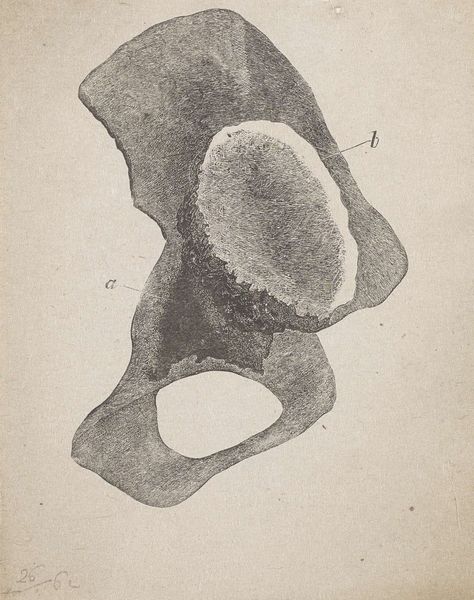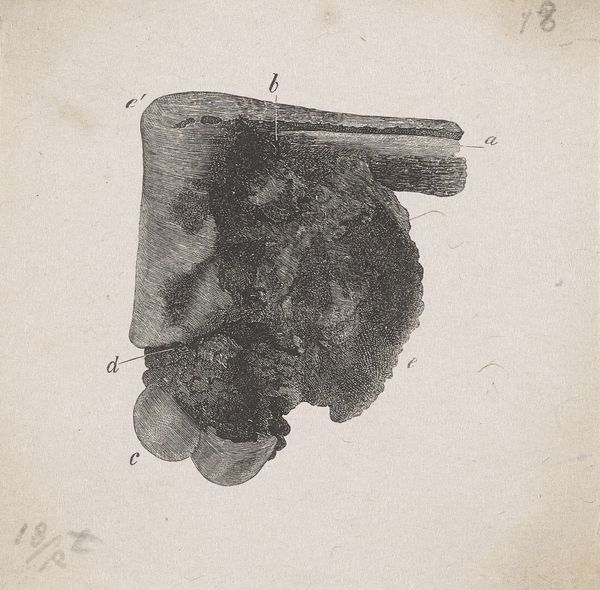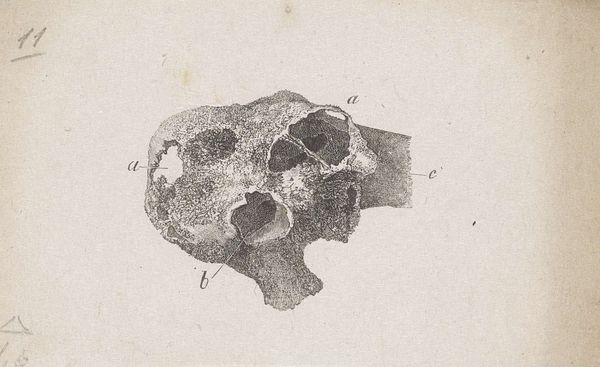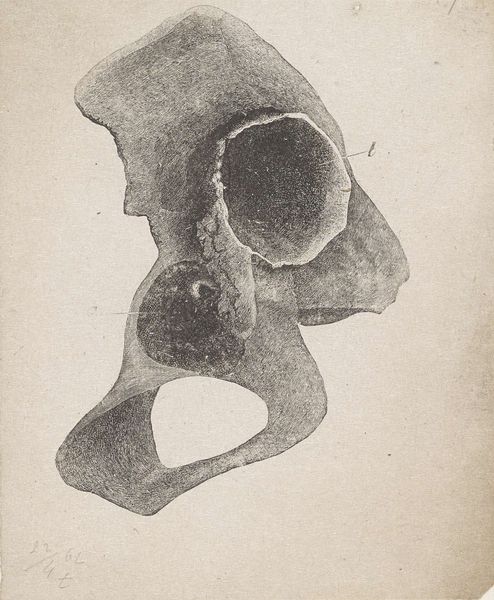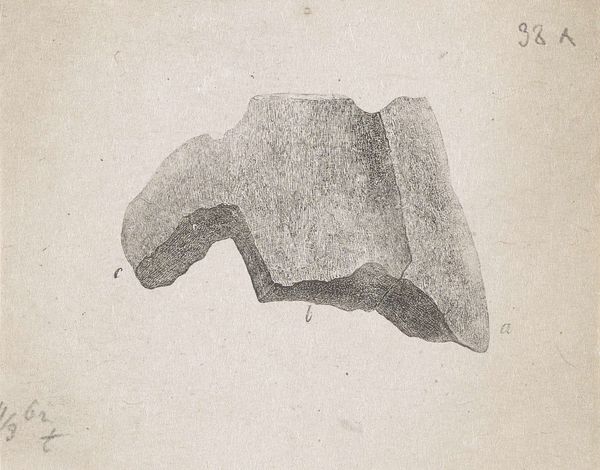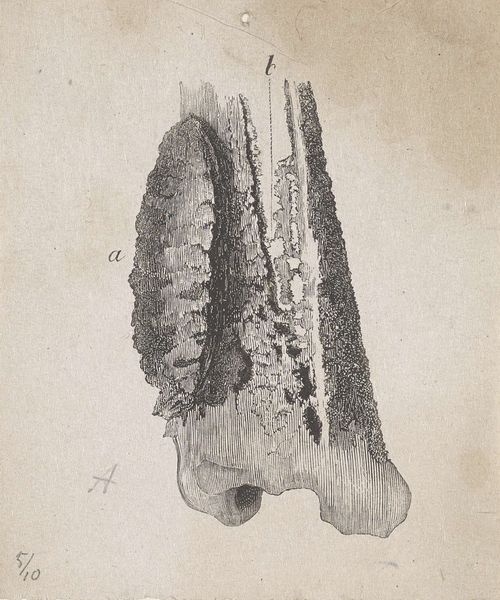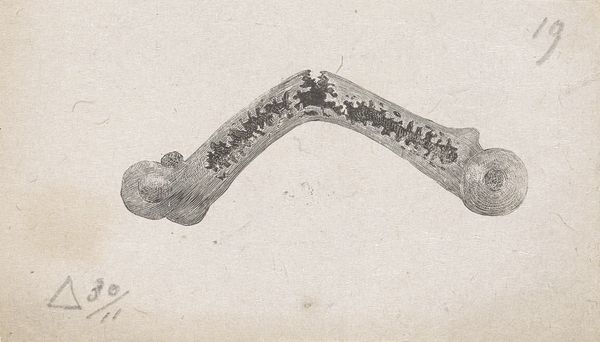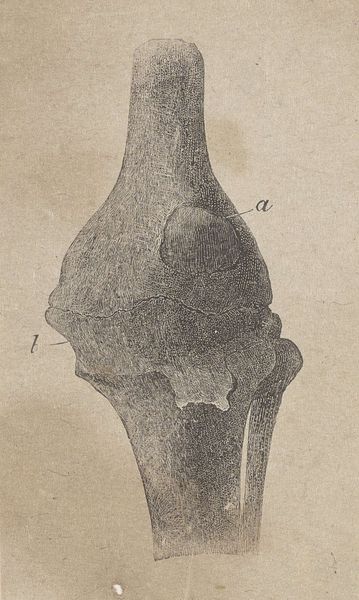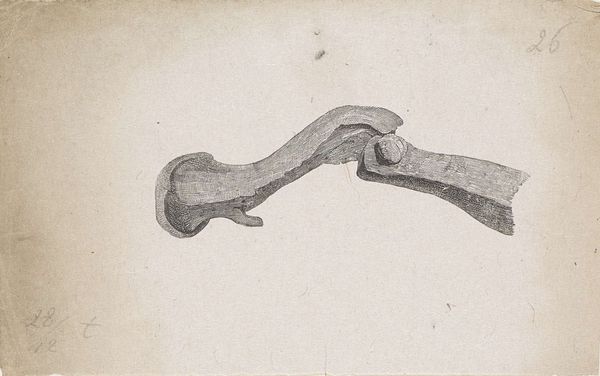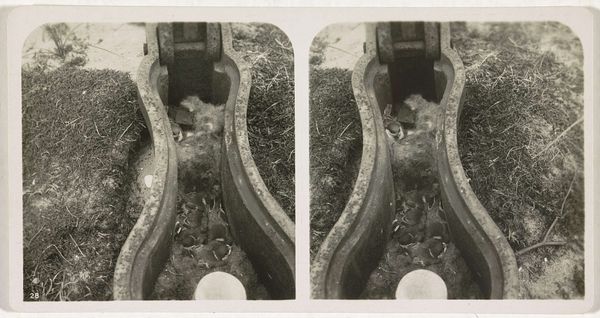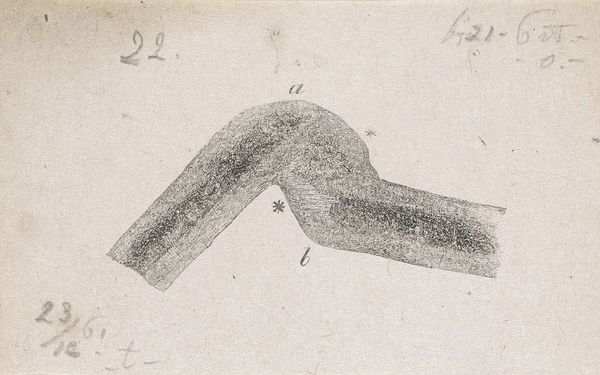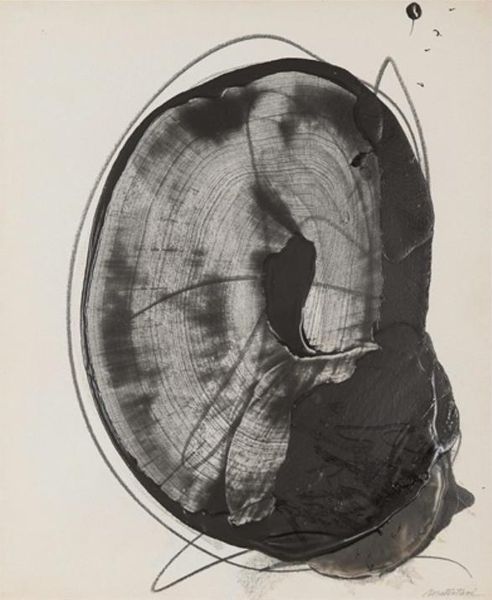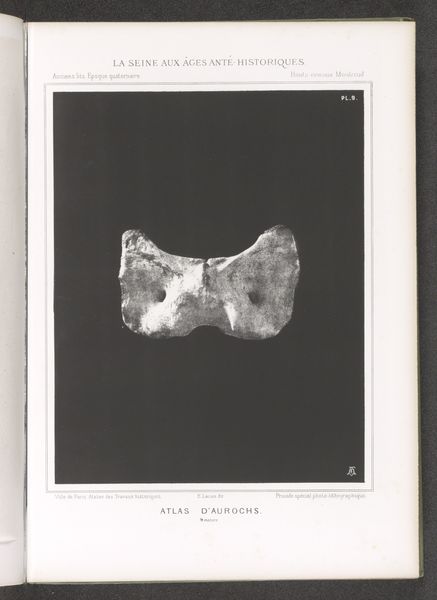
drawing, pencil, graphite
#
pencil drawn
#
drawing
#
pencil sketch
#
pencil drawing
#
pencil
#
graphite
#
academic-art
#
realism
Dimensions: height 107 mm, width 115 mm
Copyright: Rijks Museum: Open Domain
Curator: This is "Menselijk bot met een afwijking," a pencil drawing created between 1836 and 1912 and attributed to Isaac Weissenbruch, from the Rijksmuseum's collection. Editor: There's a haunting simplicity to this piece. It feels almost… clinical, but rendered with such careful, delicate lines. It makes you think of mortality and the body as a site of vulnerability. Curator: Absolutely. Given its period, it would have been deeply entangled with evolving discourses around the body, pathology, and emerging medical sciences. Remember, this was a time of intense debates about anatomical dissection and its relationship to broader societal views on personhood, disease, and death. How might those anxieties inform our reading today? Editor: Seeing these bones rendered with graphite inevitably brings to mind vanitas traditions. Bones, skulls—they’re all symbols, of course, for time's relentless passage and life's ephemerality. It invites you to consider not just physical death but the decay of cultures and ideas. Curator: I'm intrigued by the anomaly highlighted in the title. It forces one to ponder disability studies and concepts surrounding “normality.” Who decides what is standard? What does it mean for an artwork to highlight the ‘different’? How does it reinforce—or perhaps challenge—societal prejudices connected to physical form? Editor: Perhaps the ‘flaw’ directs us to the inherent imperfections in all things. Look how precisely Weissenbruch has mapped the subtle textures of the bone with detailed strokes and shading, and how each dark spot carries this somber symbolism forward. It's as though he's meditating on the human condition. Curator: Considering this artwork's origins, I imagine it would also invite reflections about ableism and access—that medical knowledge isn't divorced from social justice implications, that our visual vocabularies for understanding disease, impairment, and embodiment always entail ideological judgements and assumptions that can serve exclusionary forces. Editor: Looking at it now, I see Weissenbruch not just as a draftsman, but a memento mori maker; I am left humbled by both art and mortality. Curator: This piece exemplifies how even a scientific drawing can illuminate socio-political realities linked to embodiment and difference, and how historical biases around 'normality' have very concrete visual ramifications for social access and representation.
Comments
No comments
Be the first to comment and join the conversation on the ultimate creative platform.

